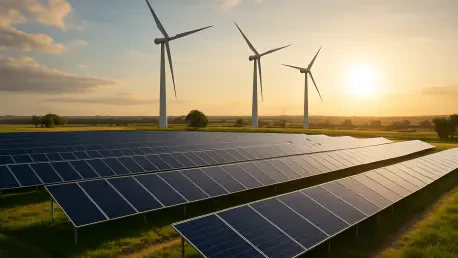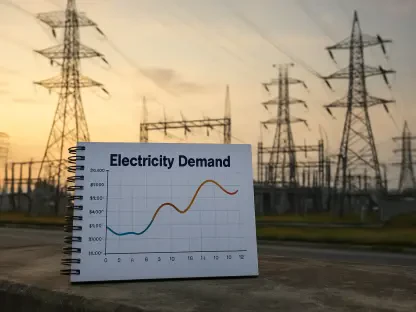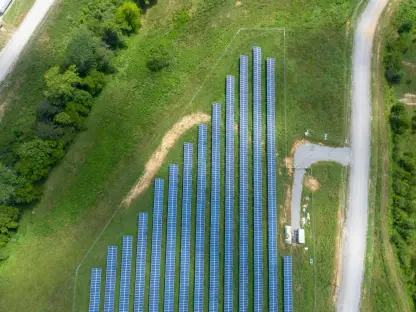In the heart of Queensland, the industrial powerhouse of Gladstone stands at a pivotal moment, poised to redefine the future of energy in Australia with a groundbreaking approach to sustainability and cost efficiency that could transform the region. Known globally for its aluminum production, this area has emerged as a focal point in a recent comprehensive report by the Climateworks Centre, which outlines a transformative path toward cleaner, cheaper energy systems. The findings paint a compelling picture of how industrial hubs can drastically reduce emissions, slash operational expenses, and fortify the national grid through innovative practices. By embracing low-emission technologies and flexible energy strategies, Gladstone could serve as a blueprint for other regions, addressing some of the most pressing energy challenges facing the country. This shift not only promises environmental benefits but also significant economic advantages, positioning industrial areas as key players in building a more resilient and sustainable energy landscape.
Pioneering a Sustainable Industrial Model
The core of Gladstone’s potential transformation lies in adopting cleaner heat sources, a move that could dramatically alter its environmental footprint. According to the detailed analysis, transitioning to low-emission heat technologies could reduce industrial emissions in the region by up to 66%, with the possibility of reaching nearly 80% under more aggressive renewable energy scenarios. This shift represents a monumental step toward decarbonization, particularly for an area heavily reliant on energy-intensive processes like aluminum production. Beyond the environmental impact, this change could future-proof industries against tightening regulations and rising carbon costs, ensuring long-term viability. The report highlights that such a transition would require initial investment but offers a clear path to substantial returns through reduced energy expenses and enhanced operational efficiency, setting a precedent for how industrial regions can balance profitability with sustainability goals.
Equally critical to this transformation is the role of flexible energy demand management, a strategy that could redefine how industries interact with the national grid. By adjusting energy consumption to off-peak periods or storing industrial heat for later use, businesses in Gladstone could save an estimated $3 million daily in operating costs while cutting peak demand by 2 gigawatts (GW). This approach not only lowers expenses but also contributes to grid stability by reducing strain during high-demand periods. Looking ahead, the report projects that by 2040, such practices could provide 4.4 GW of flexible power, comparable to the output of three of Queensland’s largest power stations. This capacity could effectively double Australia’s ability to stabilize the energy grid, presenting a cost-effective alternative to traditional reliance on coal and gas during emergencies, and showcasing how industrial flexibility can act as a powerful tool for national energy security.
Economic and National Implications
The economic ripple effects of Gladstone’s energy shift extend far beyond local industries, promising widespread benefits for consumers and the broader Australian economy. One of the most striking projections from the report is the potential to reduce wholesale electricity prices by as much as 60% through electrification and the integration of heat storage systems. Such a dramatic drop in costs could alleviate financial pressures on households and businesses alike, making energy more accessible and affordable across the board. Additionally, the cost savings for industries could enhance competitiveness, potentially attracting further investment into the region. This economic advantage underscores the interconnected nature of industrial innovation and national prosperity, illustrating how targeted energy reforms in one area can yield benefits that resonate on a much larger scale.
Beyond Gladstone, the report casts a wider net, examining the role of other industrial regions such as Illawarra, Hunter, Kwinana, and Pilbara in Australia’s energy and emissions landscape. These areas collectively account for one-eighth of the nation’s emissions while supporting nearly half a million jobs and contributing $166 billion to the GDP. The strategies proposed for Gladstone—cleaner heat sources and demand flexibility—could be replicated in these regions, amplifying the impact on emissions reduction and grid reliability. The significance of these industrial heartlands cannot be overstated, as they represent both a substantial challenge and an immense opportunity for sustainable growth. Implementing these changes on a national scale could safeguard jobs, protect economic contributions, and position Australia as a leader in industrial decarbonization, demonstrating the far-reaching potential of localized energy innovations.
Building Momentum with Policy Support
The path to realizing Gladstone’s energy transformation hinges on robust government support to mitigate financial risks and accelerate the adoption of new technologies. Experts behind the report draw parallels to past successes in large-scale solar energy, where strategic policy interventions unlocked billions in private investment annually. Similar backing for cleaner industrial practices could catalyze a rapid shift, providing incentives and frameworks to encourage businesses to embrace low-emission technologies. Without such support, the transition risks being slowed by upfront costs and market uncertainties, delaying the environmental and economic benefits. The call for policy action emphasizes the need for a collaborative approach between government and industry to ensure that the momentum for change is not lost, highlighting the critical role of leadership in driving systemic progress.
Reflecting on the strides made, it becomes evident that Gladstone has set a powerful example for industrial regions everywhere, showing that sustainability and profitability can go hand in hand. The initiatives to cut emissions by up to 80% and save millions daily through flexible energy management have proven their worth, while the projected addition of 4.4 GW of flexible power by 2040 has strengthened grid reliability. Moving forward, the focus shifts to scaling these solutions with targeted government funding, inspired by past renewable energy triumphs. Extending these strategies to other industrial hubs promises to further reduce national emissions and secure economic stability. The journey underscores a vital lesson: with the right support and vision, industrial regions can lead the charge in crafting a cleaner, more affordable energy future, paving the way for innovative policies and partnerships to sustain this transformative momentum.









